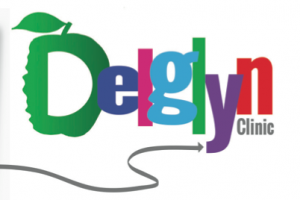January has just whizzed by and now we find ourselves thrown into February. A cold and icy month, the last month of winter in the UK and the only month that can pass without a single full moon. However, to warm the “cockles of our hearts” February is also a time for celebration. Some of you may be celebrating the life of St Valentine by sending valentine cards, depicting hearts and roses to show your love and affection to one another. So who was Valentine? He was a Roman priest who fell in love whilst in jail during the reign of Emperor Claudius II in the third Century AD. On his day of execution, the 14 February, he sent her a love letter signed “from your Valentine” – so the story goes.
The heart is one of the most important organs and has long been recognized across cultures as being a symbol of love, charity, joy and compassion. It is the first organ to form during our development in the womb and whilst it has to go through several complicated stages of development, it begins to nourish our growing embryo with only a few cells that resemble a long tube.
The heart is a pump made of tough cardiac muscle and is responsible for pumping oxygen and nutrient-rich blood to help our body function and remove the waste products that we don’t need. For example the brain requires oxygen and glucose, which, if not received continuously, will cause it to loose consciousness. Muscles need oxygen, glucose and amino acids, as well as the proper ratio of sodium, calcium and potassium salts in order to contract normally. If the heart ever ceases to pump blood, the body begins to shut down and after a very short period of time will die. Unfortunately, once damaged, unlike the liver, the adult human heart cannot completely heal.
So why do we neglect it so much? The heart muscle, just like normal muscle needs to be fed and nourished correctly for it to work properly and it also needs to be exercised to become stronger and leaner. Did you know that the main heart condition in the UK is coronary heart disease or CHD? It is the most common form of heart disease among adults and the single biggest killer in the UK.
CHD begins when your coronary arteries – the arteries that supply your heart muscle with oxygen-rich blood – become blocked or narrowed because of a build-up of fatty deposits. In time, your arteries may become so narrow that they can’t deliver enough oxygen-rich blood to your heart muscle. This can cause angina and symptoms can include chest pain or heaviness and discomfort.
If a piece of the fatty deposit in your artery breaks off, it may cause a blood clot to form. If this blocks the coronary artery, part of the heart will be starvedof oxygen-rich blood and may become permanently damaged – this is a heart attack.
In clinic, I’ve worked with many heart patients and I’ve learnt much about the rehabilitation after heart surgery and the long-term effects of heart conditions. There is a great local organization called UPBEAT who run nurse lead exercise classes for those rehabilitating from a heart condition, its great to see them keeping fit once again. One gentleman who came into clinic said, after his heart attack he was given a second chance and he wasn’t going to waste it!
So what can we all do to help our heart stay strong and healthy? It’s relatively easy, eat great nutritious natural food and take regular exercise. Have a look at the heart healthy exercise and meal ideas below. I hope you find them interesting and helpful. More information on my website www.delglynclinic.co.uk
A healthy balanced diet can benefit your heart, lower your cholesterol level and can help manage diabetes, arthritis, help you lose any excess weight. It is simple, you just need to try to eat:
plenty of fruit and vegetables: apples, berries, tomatoes, pomegranate, bananas, cruciferous green vegetables such as cabbage, broccoli, cauliflower, brussel sprouts. Spinach, kale, lambs lettuce, rocket and watercress are great additions too as they are full of carotenoids which are great antioxidants. Parsnips are another good choice given their high level of potassium which helps reduces blood pressure and high levels of folate which helps reduce homocysteine levels in the blood which are associated with a higher risk of heart disease
starchy foods: brown/wild rice, potatoes, sweet potatoes, squash, whole-grain barley, whole wheat or spinach pasta, quinoa and millet. Other whole grains include bulgur, oatmeal, whole rye and buckwheat. If you’re buying bread, read the ingredients list to see if it includes a whole grain as the first ingredient and remember shop bought bread has added sugar to it so eat in moderation
semi-skimmed milk and lower fat dairy products
lean meat: chicken and turkey, oily fish such as mackerel and salmon, eggs, beans and other non-dairy sources of protein such as quinoa, buckwheat, hempseed, chai seeds, soy, Quorn, chickpeas, legumes such as peas, beans and lentils
use heart healthy oils to drizzle over food such as flaxseed oil, walnut oil, extra virgin olive oil, to sear or brown food use almond, avocado or light/refined oil. Light virgin olive oil is best for stir-frying, baking or oven cooking
Nuts: a handful walnuts, almonds, brazil nuts are great but don’t over do it
Alcohol: cut back on the amount of alcohol you drink and always stick within the recommended guidelines set by the Government
Cut back on junk foods: takeaways, processed/packaged meals and other foods or drinks high in sugar, salt, saturated or trans fats
Drink plent of water too!
Heart Healthy Meals
Breakfast
Porridge made with skimmed milk and whole porridge oats; banana; glass of pure, unsweetened orange juice
Poached egg on two slices of wholegrain toast
Lunch
Homemade lentil soup, wholemeal crackers with hummus
Jacket potato with baked beans (organic reduced salt/sugar) and rocket salad
Evening Meal
Jacket potato or sweet potato with baked salmon, steamed spinach and peas
Homemade chunky vegetable goulash, brown rice, broccoli
Snack Ideas
2 satsumas, small handful of unsalted nuts, 7-8 strawberries, 1 pear, 1 small banana, 1 medium apple, 3 oatcakes with low fat cream cheese, carrot sticks with 2 tablespoons hummus or 2 plums
These meal ideas are not intended as an eating plan to be followed on a long-term basis. If you are unsure or have a health concern, talk to your GP or practice nurse for further advice.
Exercise Ideas
Being active is key to having a healthy heart so it is important to try and stay active throughout the day and reduce the amount of time you sit for long periods.
Researchers estimate that each hour of regular exercise you get, you’ll gain 2 hours of additional life expectancy, even if you start in middle age! Walking is a great option. Just look at a few of the benefits from a brisk 30 minute walk: prevents heart disease, lowers your risk of high blood pressure, diabetes and stroke, helps smoking cessation, aids cardiac rehabilitation, builds stronger immunity, reduces blood pressure if you have high blood pressure, helps reduce stress, tension, depression and anxiety, helps weight management, improves overall health and wellbeing and prolongs your optimal health. Nearly everyone can do it and all you need is a good pair of shoes. You could go swimming, take exercise classes or play a sport, but physical activity also includes everyday things like gardening and climbing stairs. Remember, any increase in physical activity will be good for your health.
You’ll get added benefits by including activities that help strengthen muscles twice a week, such as exercising with weights, working with resistance bands, heavy gardening or carrying shopping. You should aim to build up to a total of 150 minutes (2.5 hours) of moderate intensity activity each week. Moderate intensity activity will make you feel warmer, breathe harder and make your heart beat faster than usual, but you should still be able to carry on a conversation.
Many health problems can be helped by regular physical activity, but if you do have a health problem, or have a condition that you are taking prescribed medication for, you should check the amount and type of activity that is suitable for you with your GP. Thank you to the British Heart Foundation for their contribution to this article.
Nicola Delglyn
Osteomyologist

